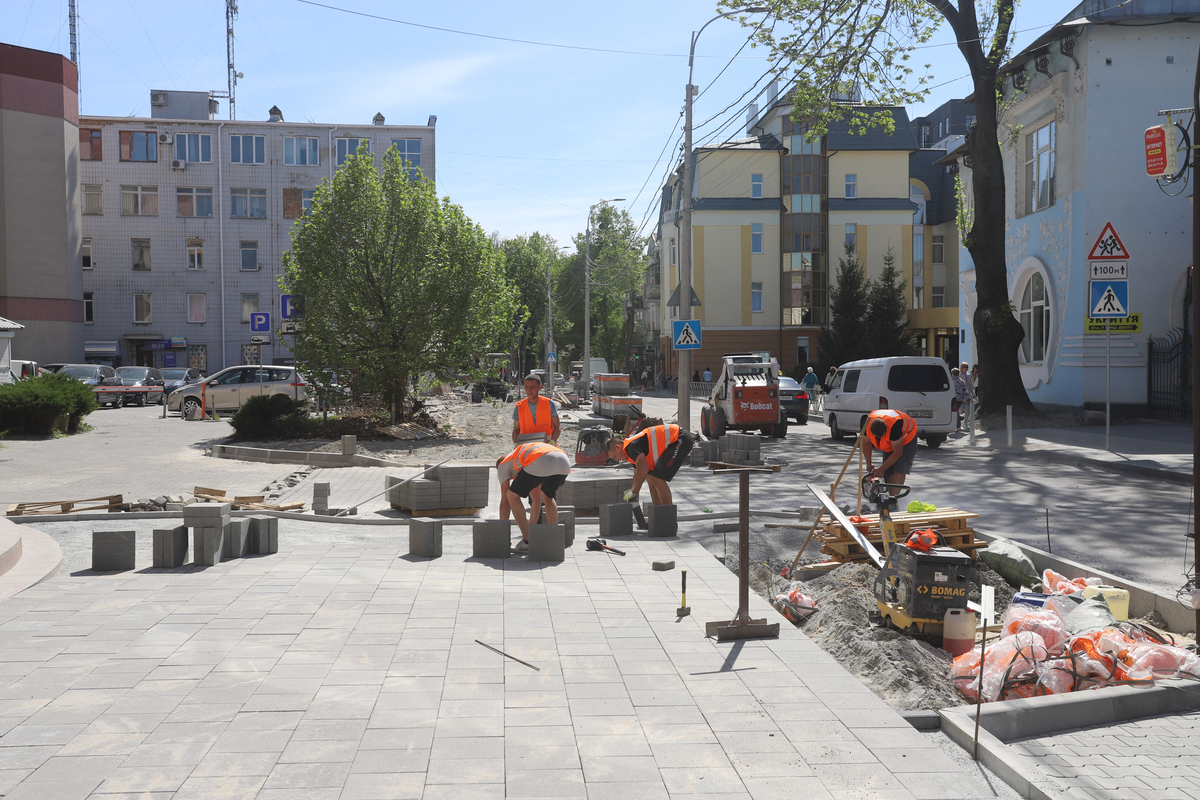By Sergii Kostezh
The war has brought dramatic change to many Ukrainian cities, but it is not only about destruction and damage that affects everyone’s lives. As civil authorities set about the task of repairing and rebuilding the damage inflicted by Russian attacks, many are replacing their former Soviet-era layouts with modern and innovative designs.
Strikes on old, large, consolidated energy systems have given way to modern and decentralized small-generation facilities, accompanied by an acceleration in the process of improving insulation and energy efficiency in buildings and infrastructure that began in 2015. Schools or administrative buildings undergoing repair in the city of Zhytomyr, for instance, receive high levels of insulation and with multiple-glazed windows leading to greatly reduced heating costs.
In the western Ukrainian city of Rivne, the city center that has remained largely unchanged since the 1980s is working to change the layout of its streets. Bike lanes and increases to public transport, much received as humanitarian aid, are hoping to reduce car use along with more amenities for pedestrians.
The acting head of the city administration, Viktor Shakyrzian, showed us a new sidewalk in one of the central streets that has been completely rebuilt to meet the needs of pedestrians – it is intended to be entirely barrier-free.
“It will stretch 1.3 kilometers (0.8 miles) to connect the Central Administrative District, the military administration with the city center. A disabled person can move freely – there are no barriers and parking discipline has been introduced. A lot of our people use pedestrian paths,” Shakyrzian says.
The same approach is also currently being taken in several streets in the area.
“The first 1.3-kilometer barrier-free route will soon be expanded to provide totally barrier-free pedestrian routes for 7.9 kilometers [5 miles] of city center streets,” the official says.
Another major motivation for this change is the presence of a large number of disabled veterans, of which there are hundreds in Rivne – with their need for accessibility seen as a priority.
“We want to make sure that when our heroes – boys and girls – return, they understand that the city is already ready, that it is adapted and they can lead a normal social life. The initial main route is 7.9 kilometers. It will connect medical institutions, educational institutions, and those institutions that will be the first to be used. We are also redoing intersections, crosswalks, and buying new low-floor transport,” Shakyrzian said, outlining his plans.
The city administrator pointed out that the funds for these improvements did not come from public budgets which is already stretched by social costs and support for the military but are covered by donations. If this new layout and traffic schemes are successful Shakyrzian they intend to replicate it tight across the city after the war, also with donor funding.
“These are funds not from the city budget, but from donors. We have a design vision, that is shared with engineers and architects – who control its implementation,” Shakyrzian says.
Engineers are not just working on rearranging streets – they are changing the very organization of space. For example, bus stops will now be redesigned to serve those with special needs and will look different.
“So that you can get out of the car there, a special extension has been made so that you can place a wheelchair, and then move to the sidewalk, and from there reach either the city administration or the city center – everything will be connected,” the contractor’s representative, Vitaly Fedoryshyn, explains.
And the complete separation of the pedestrian zone from automobile traffic also requires new technical solutions – for example, not only limiters for cars but also special paving stones that will withstand the weight of special equipment now intended to operate separately in the pedestrian zone. This is based on the way cities in the Netherlands were rebuilt, and over the past 20 years, in Poland.
“The paving stones are of a wide format to make it easier to move, and where the transit point is, they are 8 centimeters (3 inches) thick so that the equipment used to clean snow or wash the pavement does not break them – so that they can withstand the load. Here, look at the thickness – any equipment and public utility transport can use it. Yes, we are doing everything on a turnkey basis – from dismantling to fully closing the road with crosswalks, with tactile paving for the blind, and posts that restrict parking,” Fedoryshyn shows us.
Similar methods being used in are being used on the streets of Kyiv, where the war has brought the need for a barrier-free environment to help those with disabilities to fully integrate with the social and employment space of the city to the forefront of planning.
The Rivne approach to the reconstruction of the city is becoming acknowledged as a necessity for existence. Its builders and engineers are confident that their experience in redeveloping city-center traffic should definitely be adopted by other cities as they learn to adapt to the new requirements of 21st century Ukrainian life.
All Photos by Sergii Kostezh, Kyiv Post
